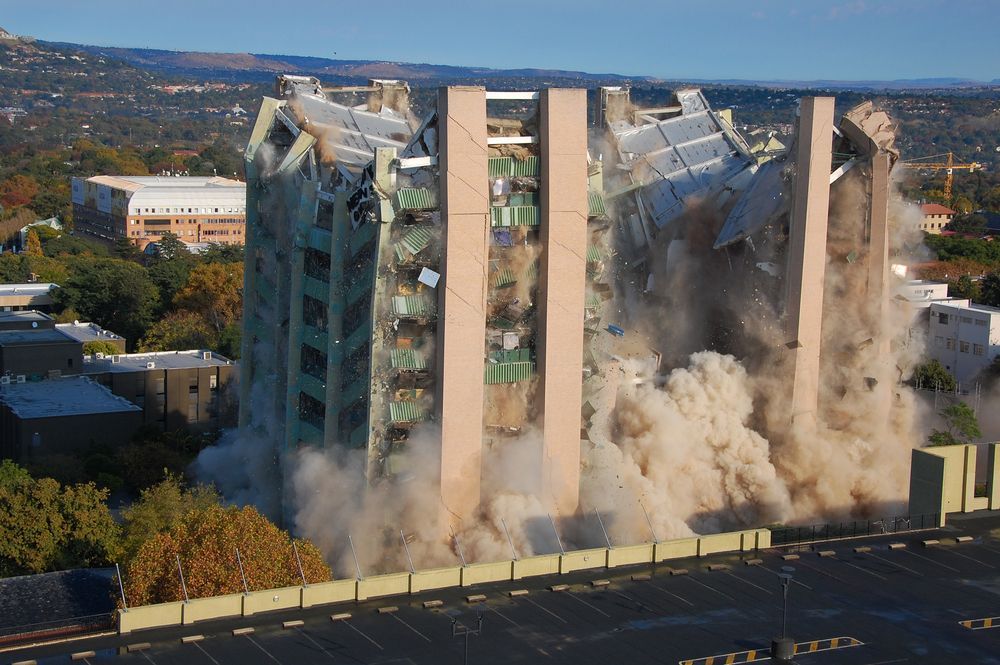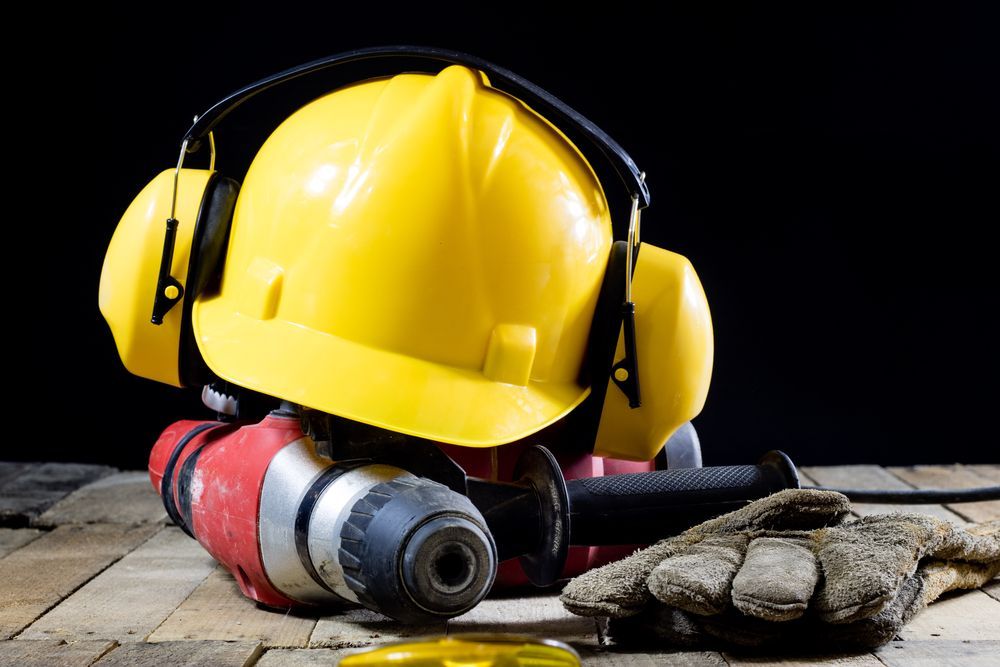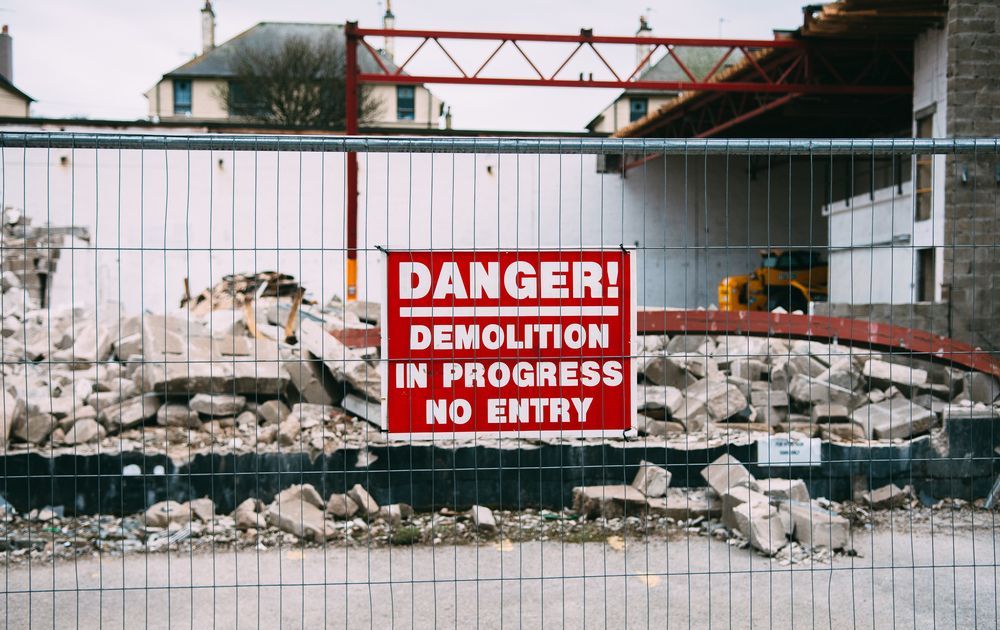How Do Building Implosions Work ?
Share this article:

A vacant building is laced with explosives, someone hits the detonator, and in a matter of seconds, a facility that once stood tall is now reduced to rubble. Building
implosions are simple, fast, and effective, right?
Think again.
While implosions are fast and effective, they’re far from simple – and planning for larger building implosions can take months of preparation before the detonator is pressed. And then after the building comes down, there’s lots of clearing and cleanup that needs to take place in order to ensure the site is ready for whatever comes next. In this post, we’ll take a closer look at building implosions, how they work, and more. Read on to learn more:
What is a Building Implosion?
A building implosion is basically the practice of quickly collapsing a building so that it falls down to its original footprint. This is typically accomplished by placing explosives on the building’s main supports or support structures. Once these explosives are detonated and the support structures are eliminated, the force of gravity should be enough to successfully collapse the entire building, with the upper parts of the building colliding with the lower parts of it to bring it down to the ground.
But planning is key to a successful building implosion. And being that implosions tend to be high-profile, well-publicized events, it’s important to get it right. For instance, back in 2017, demolition crews attempted to implode the former home of the Detroit Lions – the Pontiac Silverdome – in the metro Detroit area. An error occurred and about 10 percent of the explosives that were placed didn’t go off. As a result, the Silverdome didn’t implode on the first attempt and crews had to do it again. In the next section, we’ll discuss the steps to planning a successful building implosion.
How Do Building Implosions Work?
As we’ve noted, building implosions take a lot of time and careful planning. In this section, we’ll discuss some of the steps that are taken by teams to pull them off successfully. Here’s a look:
Study the Building Layout
The first step in planning a building implosion is securing the architectural blueprints. This helps teams map out where to place explosives to attack the structural supports of the facility and bring it down to rubble. After teams study the blueprints, they’ll often walk the property to see it physically to help validate any implosion plan. Depending on the type of facility, an interactive model may be created to allow for virtual testing of the implosion plan in a simulated environment.
There are various other factors that a demolition team must determine. One of the most important is which way to demolish a building. Some buildings are able to be imploded on one side and can fall into a parking lot or adjacent empty space to one side of the existing building. Other buildings, such as those in downtown areas where other properties are located nearby, must be imploded so they fall straight down. Determining how a building falls is also a part of this step.
Prepare the Building
After there’s a plan in place, the building needs to be properly prepared for implosion. This often consists of removing any personal property that an owner wants to save from the building and disconnecting all utilities from the property. If a water or gas line is not turned off prior to detonation, it could lead to flooding in the area or even the risk of a fire. This step may also include manually taking out some load-bearing walls or manually weakening walls or structural supports within the property, which can help bring the building down faster and more effectively during the implosion.
Part of preparation also includes working with the city or local municipality to secure the proper permits to perform the demolition. Requirements can vary based on state and municipality and may take time to secure, making it important to start this process early. Area property owners and the public should also be notified of implosion plans so they can make plans to avoid the area on the day of detonation or observe from a safe distance.
Place Detonators and Ready the Property for Implosion
After the team has planned the implosion, prepped the property, and secured the necessary permits, it’s time to pick a day and get ready to bring down the property. Explosives are placed within the building, the site is secured, and it’s time to bring the property down to rubble.
What is Used for Building Implosions
Detonators and dynamite are the two main ingredients in any implosion. Explosives are typically placed on structural support columns or in other areas that were strategically identified when studying the building layout. Once in place, these explosives are then triggered by a remote detonator. Depending on the plan, the explosives may go off all at once or in a timed sequence.
Clean Up
Once the building comes down, the work is not done. You can’t just leave a massive pile of rubble somewhere and go about your day. The debris needs to be cleaned up and transported off-site accordingly. This is typically the most labor-intensive step of implosion. Excavators, dump trucks, and dumpsters are often brought to the site to assist with clean-up. Debris may also be sorted based on what can be recycled and what’s destined for the junkyard or landfill. Depending on the size of the building that was imploded, clean-up can take anywhere from days to weeks to several months.
Contact Us Today
For more information on how building implosions work,
contact us today. As experts in all-things demolition, we don’t just specialize in reducing buildings to rubble, but doing it safely. Contact us today to learn more about the different types of demolition that we perform and how we can work with you on your next project.



